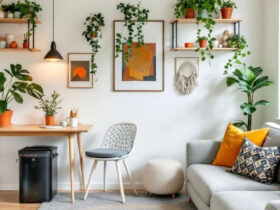Landscaping plays a pivotal role in transforming any home into a sanctuary. By integrating thoughtful design, carefully selected plants, and sustainable practices, homeowners can enhance both the aesthetic and functional value of their property. In this comprehensive guide, we will dive deep into the intricacies of landscaping to provide you with invaluable insights that will not only beautify your home but also increase its overall market value.
Why Landscaping is Essential for Every Home
When thinking about home improvements, many homeowners overlook the power of landscaping. The truth is, a well-maintained outdoor area can significantly impact a home’s curb appeal, its emotional warmth, and its environmental benefits. Beyond appearances, landscaping also promotes better energy efficiency, air quality, and even mental health.
Increasing Curb Appeal
Your outdoor area is the first thing people see when they approach your home. A thoughtfully designed landscape can convey a sense of warmth, comfort, and sophistication. Curb appeal is not only important for personal satisfaction but also for boosting your home’s marketability should you ever decide to sell.
A few strategic changes—like incorporating lush greenery, water features, or stone walkways—can create a sense of tranquility, turning your outdoor space into a welcoming retreat. Additionally, well-planned lighting can highlight these features, adding safety and aesthetic value at night.
Environmental and Economic Benefits
In today’s environmentally-conscious world, many homeowners are looking for ways to make their properties more sustainable. Landscaping offers an excellent opportunity to do just that. Native plants, for example, require less water and fewer fertilizers, making them an eco-friendly choice that also saves money. Incorporating rain gardens can help manage stormwater runoff, reducing the risk of flooding and soil erosion.
Moreover, a well-landscaped home can reduce energy costs by providing shade in the summer and acting as a windbreak in the winter. Strategic placement of trees and shrubs can cut down air conditioning and heating needs, offering long-term savings on your utility bills.
Key Elements to Consider in Landscaping
Landscaping is more than just planting a few trees and shrubs. It involves creating a well-balanced design that blends form and function seamlessly. Below, we’ll explore some critical aspects that make up a successful landscaping plan.
Design Principles
At the heart of any great landscaping project is a well-thought-out design. Key principles to consider include:
- Unity:
This is achieved by ensuring all landscaping elements complement each other. From plant selection to hardscapes, everything should work together to create a cohesive look.
- Balance:
Whether you prefer symmetrical or asymmetrical designs, balance ensures that the space feels complete and harmonious.
- Proportion:
Choosing elements that are appropriately sized for your space is critical. Oversized plants or features can overwhelm a small yard, while tiny features can get lost in a larger area.
- Focal Points:
Every landscape should have a focal point—something that draws attention. This could be a water feature, a large tree, or even a statue.
Plant Selection
Selecting the right plants is essential for creating a sustainable and attractive landscape. Considerations should include:
- Climate:
Choose plants that thrive in your local climate conditions. Native species are often the best choice as they require less maintenance.
- Soil Type:
Understanding your soil type will help you select plants that will flourish. Conduct a soil test to determine its pH level and texture, then choose plants that are compatible with these conditions.
- Maintenance Requirements:
Not all plants are created equal when it comes to maintenance. If you prefer a low-maintenance garden, opt for perennials that don’t require frequent watering or pruning.
- Seasonality:
To ensure your garden looks great all year round, choose a mix of plants that bloom in different seasons. This will provide continual color and interest in your yard.
Hardscaping Elements
Hardscaping refers to the non-plant elements in your landscape, such as patios, walkways, and retaining walls. These features not only add visual interest but also serve functional purposes.
- Walkways:
A well-designed pathway can guide visitors through your garden and protect your plants from being trampled. Materials like stone, brick, or concrete can be used to create durable and attractive walkways.
- Patios and Decks:
A patio or deck provides a space for outdoor entertaining. Choose materials that complement the style of your home, whether that’s sleek modern pavers or rustic wooden planks.
- Water Features:
The soothing sound of running water from a fountain or pond can transform your garden into a tranquil oasis. Water features also attract wildlife, adding an extra layer of life to your outdoor space.
Irrigation Systems
A well-planned irrigation system is crucial for maintaining a healthy landscape, particularly in areas with dry climates. Drip irrigation is one of the most water-efficient options, delivering water directly to plant roots and minimizing waste.
Smart irrigation systems that adjust based on weather conditions can further reduce water usage, ensuring that your plants get just the right amount of hydration.
Creating a Functional Outdoor Living Space
While aesthetics are important, your landscape should also serve a functional purpose. Designing a landscape that extends your living space into the outdoors can greatly enhance your quality of life.
Outdoor Kitchens and Dining Areas
An outdoor kitchen or dining area can be a wonderful addition for those who enjoy entertaining. Grill stations, countertops, and even refrigerators can be incorporated into your outdoor space, making it easy to prepare meals while enjoying the fresh air. Surround your dining area with lush greenery or decorative screens to create a sense of intimacy and privacy.
Fire Pits and Seating Areas
A cozy fire pit surrounded by comfortable seating can make your garden an inviting spot for evening gatherings. Choose materials that can withstand outdoor conditions and consider adding cushions or throws for added comfort.
Play Areas for Children
If you have kids, you may want to dedicate part of your outdoor space to a play area. Install soft grass or rubber mulch to create a safe surface for play. You can also add swings, climbing structures, or even a sandbox to keep children entertained.
Sustainability and Eco-Friendly Practices
Sustainable landscaping is more than just a trend—it’s a responsible way to create a beautiful garden that benefits both the environment and your wallet.
- Composting:
Turn kitchen scraps and yard waste into nutrient-rich compost to feed your plants.
- Rainwater Harvesting:
Install rain barrels to capture runoff from your roof and use it to water your garden.
- Xeriscaping:
This is a water-efficient landscaping method that involves choosing drought-tolerant plants and reducing the need for irrigation.
By adopting eco-friendly practices, you can minimize your environmental footprint while still enjoying a lush and vibrant outdoor space.
FAQs
Here are some FAQs about landscaping home-hearted
To make your outdoor space usable in all seasons, consider installing features like a fire pit for warmth in colder months, pergolas or shade structures for summer heat, and durable, weather-resistant furniture. Additionally, planting evergreens or other year-round plants can keep the landscape looking lively through all seasons.
The best plants will depend on your climate and the aesthetic you want to achieve. However, native plants are often recommended because they require less maintenance and water. You can also include fragrant flowers, colorful shrubs, and trees that provide shade to create a comfortable and welcoming environment.
Yes, professional landscaping can increase the value of your home by improving curb appeal and making your outdoor space more functional and attractive. A well-designed garden or outdoor area can make your home stand out in the market and potentially attract more buyers.
If you’re on a budget, you can still achieve a beautiful home-hearted landscape by:
Starting small, focusing on one area at a time
Using native plants that are low-maintenance and affordable
DIYing certain elements, like building your own planters or pathways
Reusing or upcycling materials like stones or wood for hardscaping
Conclution
Landscaping is an essential element in creating a warm, welcoming, and environmentally friendly home. By incorporating smart design, native plants, and sustainable practices, you can transform your outdoor area into a functional and aesthetically pleasing space. Whether you’re looking to enhance curb appeal, create an outdoor living area, or adopt eco-friendly gardening techniques, the possibilities are endless.





Find Us on Socials